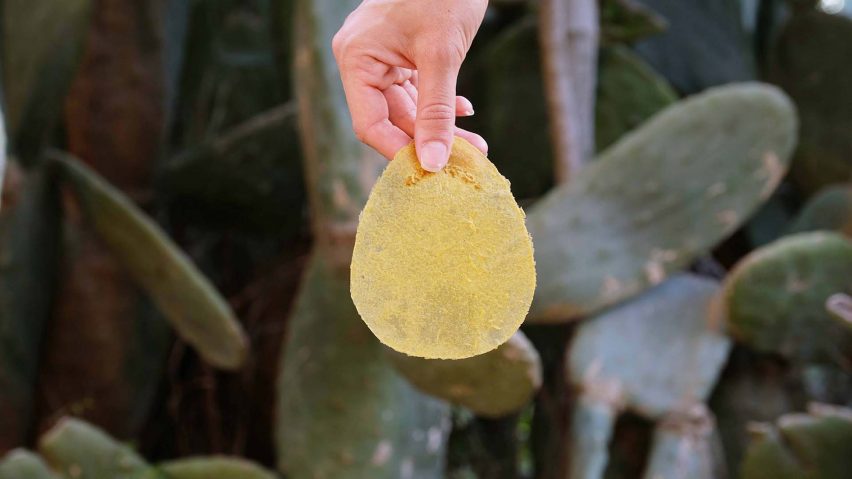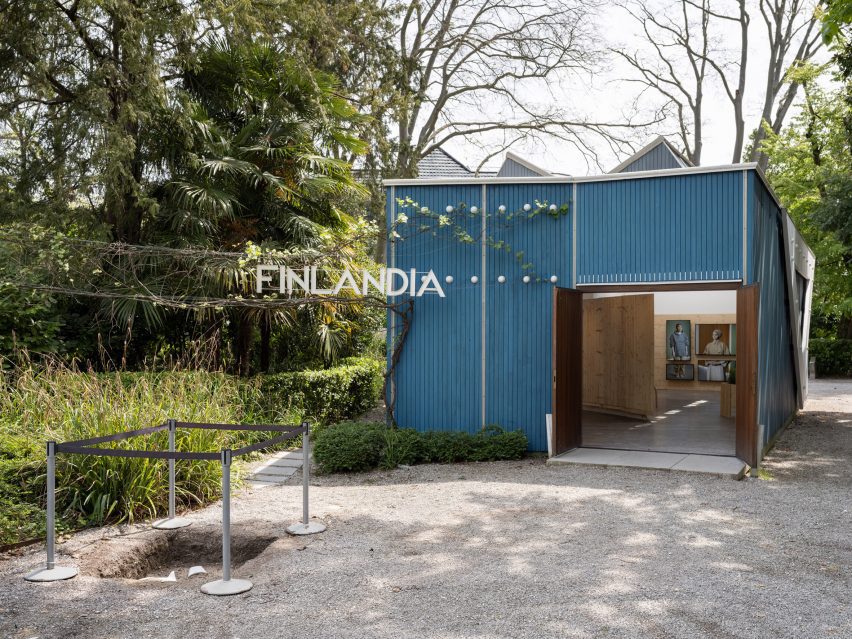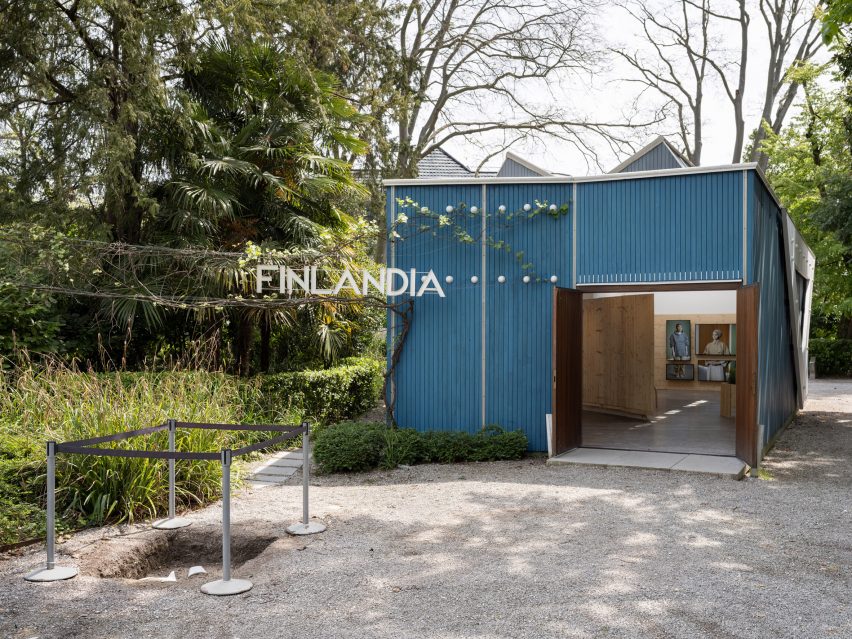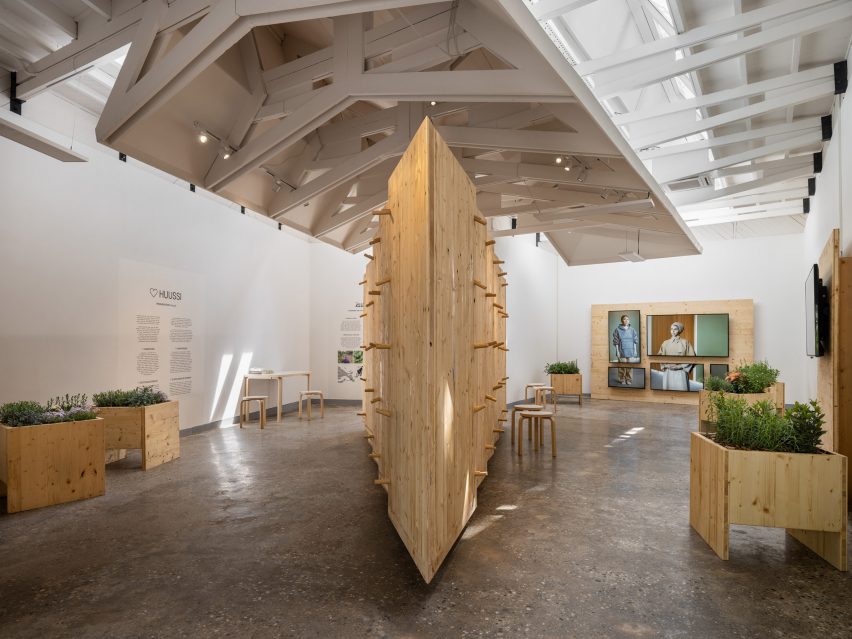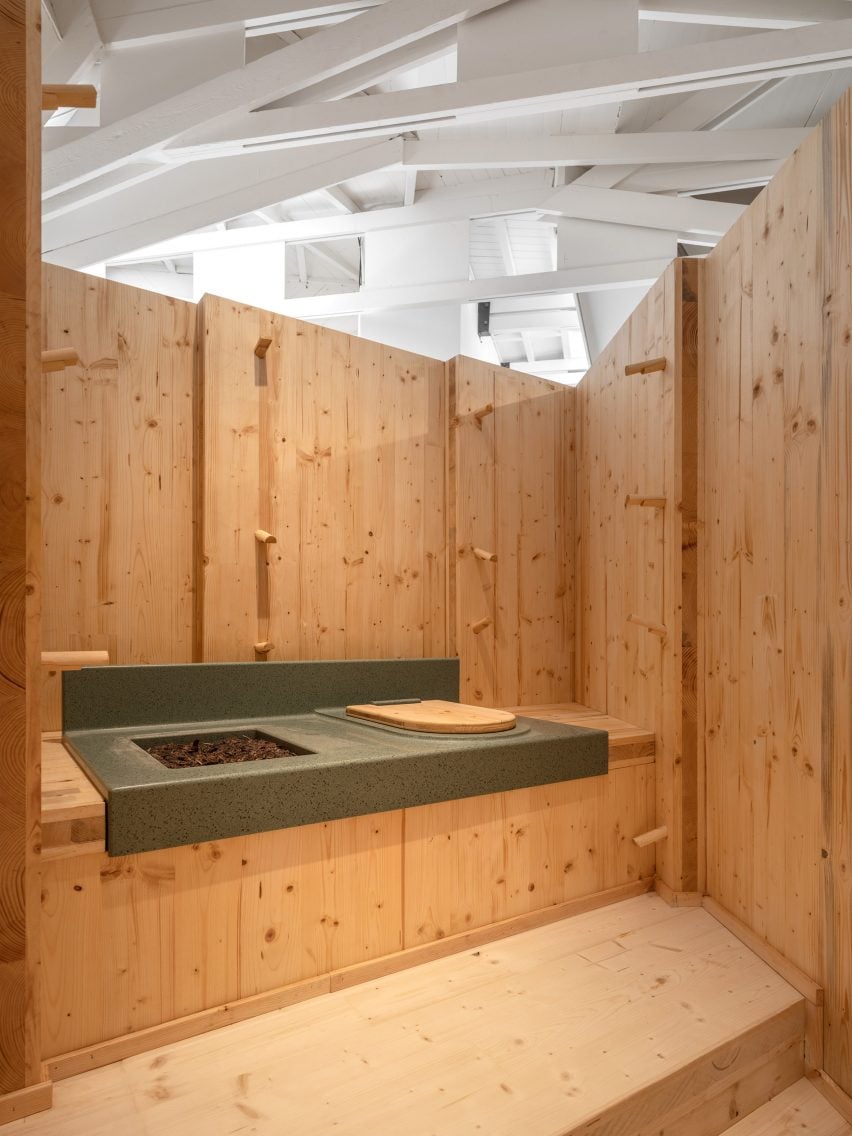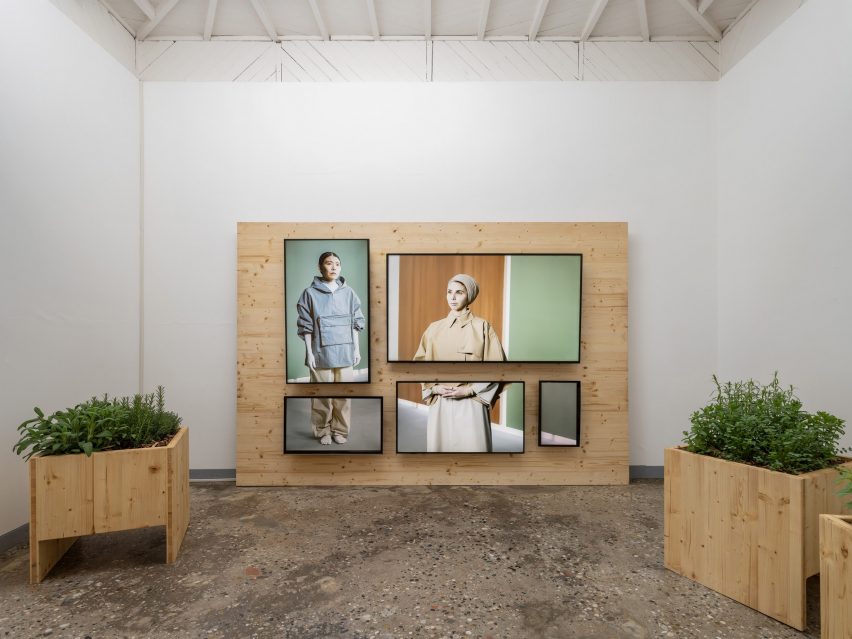Seeded toilet paper encourages plants to grow with human-waste fertiliser
Industrial design student Avia Revivi has designed a biodegradable toilet paper named O-SOW, which integrates seeds to encourage plant growth.
Revivi first devised the product to be used by people going to the toilet outdoors during a hiking trip in an Israeli desert.
“There were days when I didn’t encounter any other travellers, but I did come across toilet paper,” the Bezalel Academy of Art and Design student told Dezeen. “That’s when I realised that I wanted to solve this problem.”
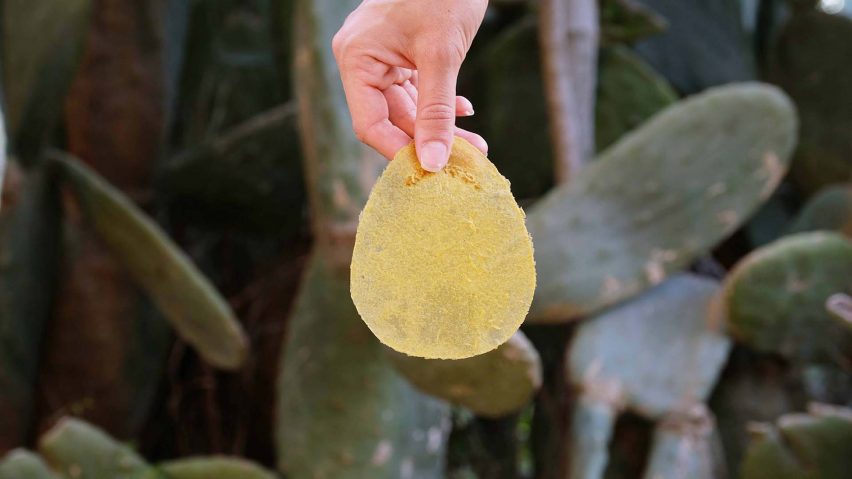
O-SOW was made from orange, aloe vera and plant seeds for hikers who “prefer to sow and fertilise the earth, rather than leave human waste behind”. She incorporated orange for its flexibility properties and aloe vera due to its softness.
She explained that the quick decomposition of citrus combined with active E.coli bacteria, which can be found in human faeces, allows the toilet paper to biodegrade quickly when left in the wild.
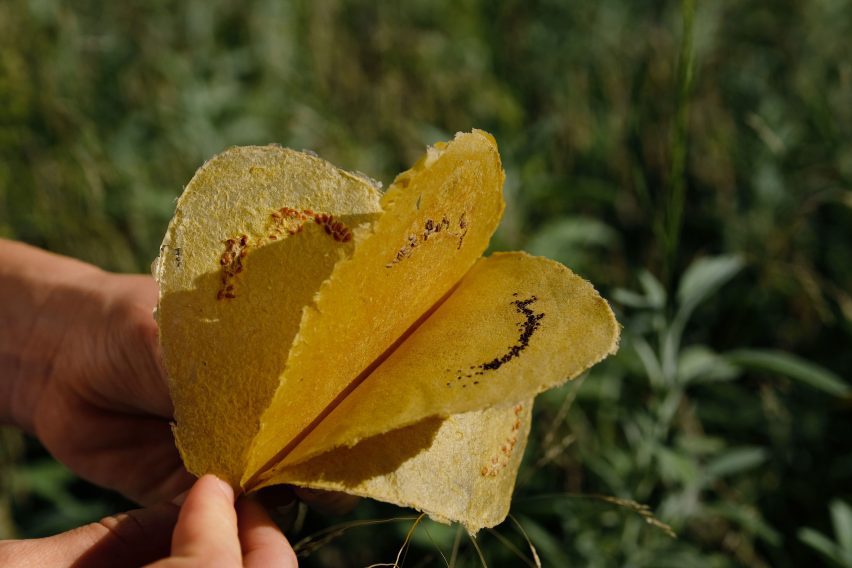
“Since we are talking about an orange slice, it can easily dissolve in moisture and liquids,” said the designer.
“Animals eat it, it decomposes in the ground and even on a sidewalk on the street.”
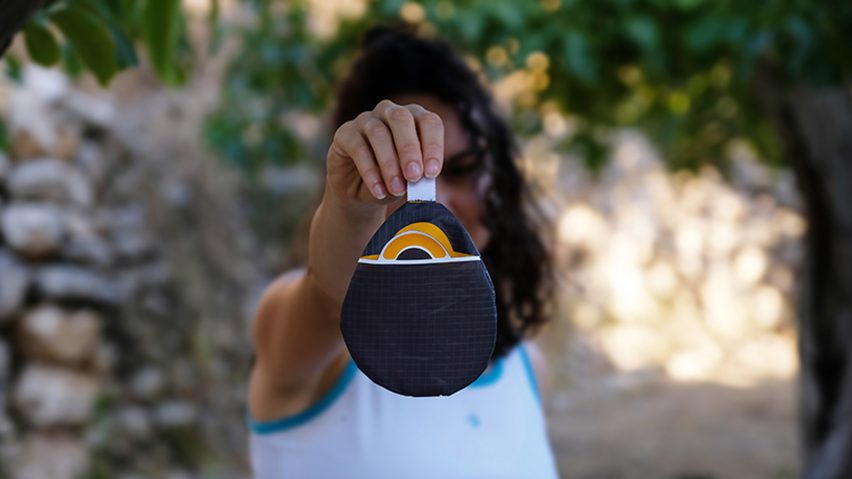
Each packet of toilet paper has different seeds woven into it that travellers can choose based on the vegetation in their travel area.
“Seeds of different plants are woven into O-SOW and with the help of the nutrient-rich human waste, natural seeding occurs simply through its use,” said Revivi.
“The seeds I used are mint, peony, rose, parsley and cress, but I aim to map popular trekking areas and assign each a number of seeds suitable for growing.”
In ideal conditions, the seeds in the O-SOW toilet paper can nourish the soil and grow plants when dispersed.
O-SOW is wrapped in single-use packaging made from biodegradable paper, has a tear thread for opening, and a label which highlights the seed type and the number of sheets in the package.
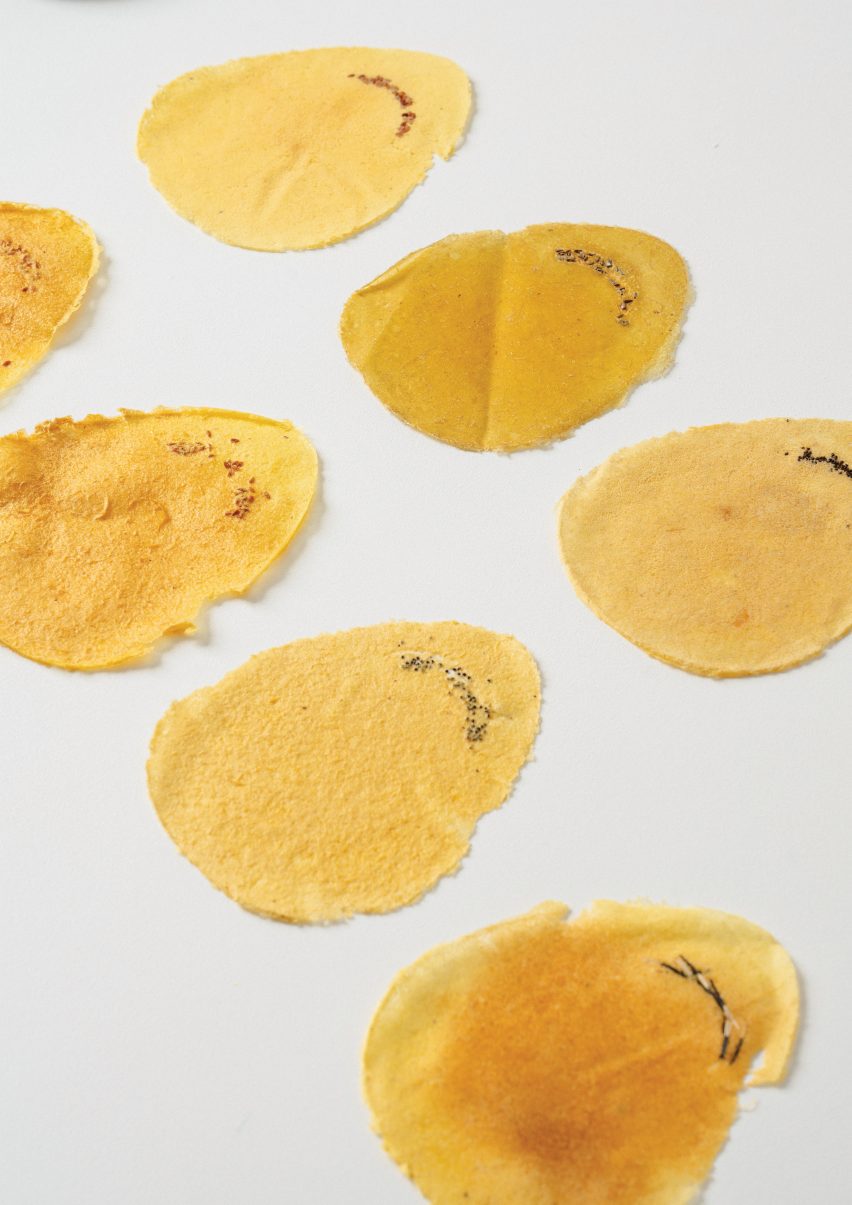
Revivi also designed a case made from leftover parachute fabric which can be used to carry the remaining sheets, once the package is open.
To keep the sheets moist the case also has an inner coating and, for easy opening, it has a layer of polyex which creates high friction allowing the sheets to be taken out individually.
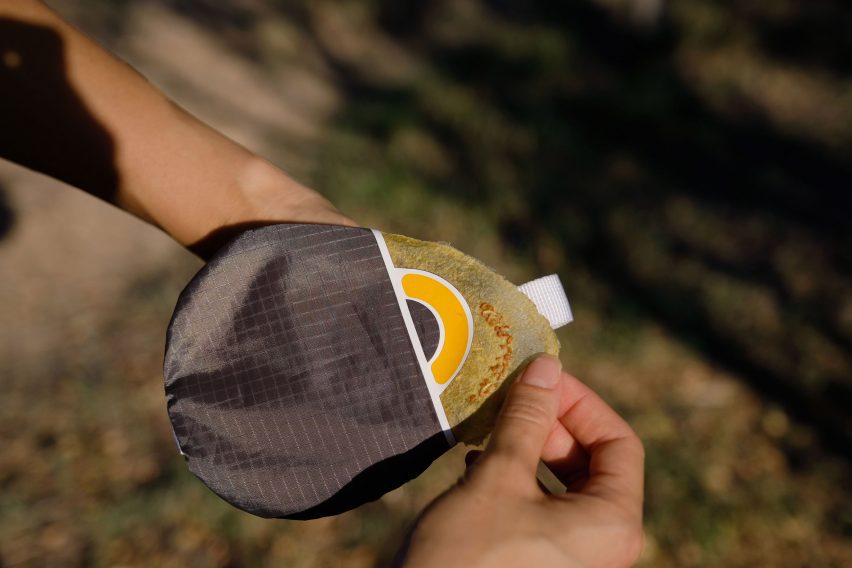
After researching the most adequate and suitable wiping method, Revivi chose a rounded shape as she found its length and width would be suitable for different hand sizes and would allow dual wiping. Each sheet has a smooth side and another side which is slightly dotted to increase users’ grip.
“When choosing the shape, it was important for me that there would be a double response option that would be product-oriented and look pleasant and promising but renewable and supporting the product values,” she said.
“It is a little thicker than toilet paper, very flexible and strong. It can break like ordinary paper, but only if you try.”
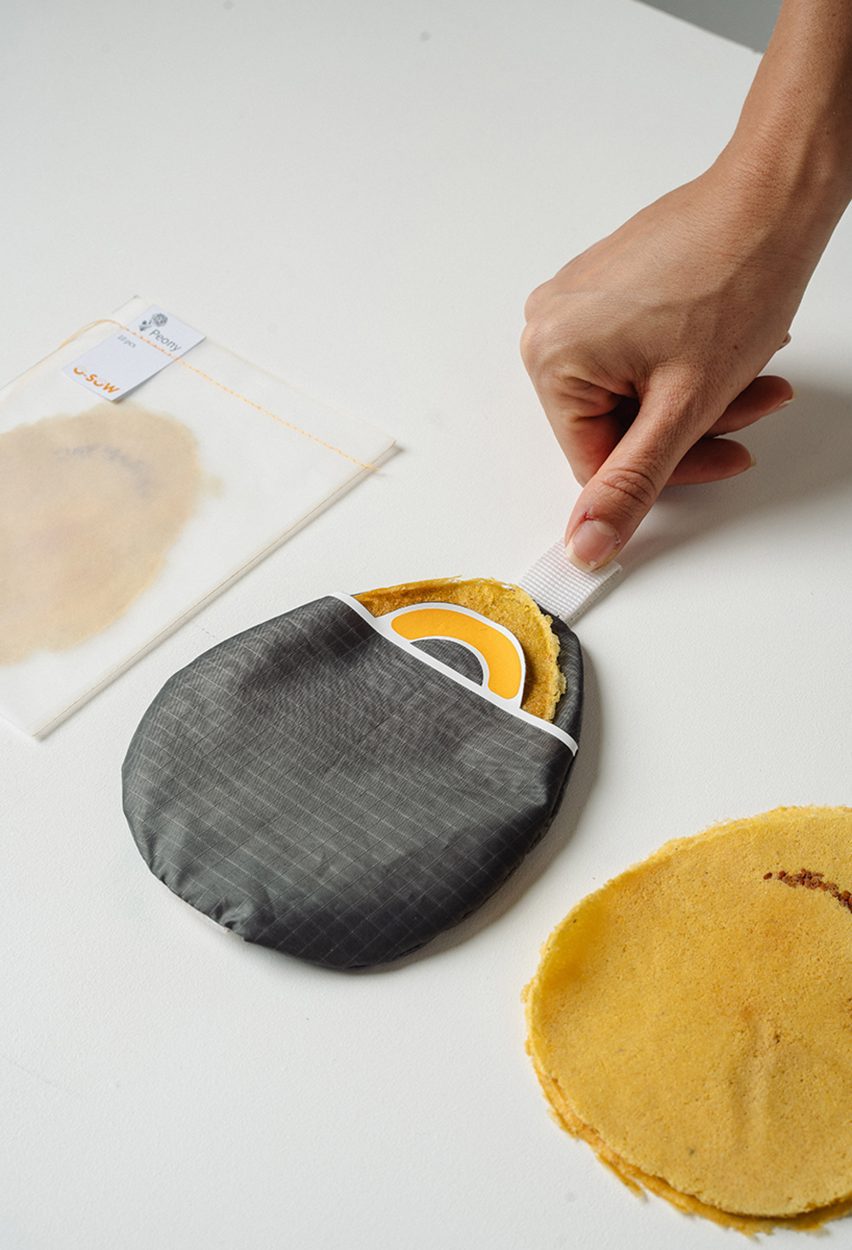
To come up with the most efficient and convenient wiping design, Revivi conducted a study with four participants who used the sheet at different points during a two-month trip.
She asked them questions about the material and shape before giving them new products to try based on their feedback.
“It seems that the conventional square-shaped toilet paper we are familiar with doesn’t serve its purpose during the act of toileting,” she explained. “However, manufacturing square-shaped sheets is easier and more convenient for factories, even though the corners remain clean when used.”
“This prompted me to explore and discover a new and innovative way for effective toileting,” she continued.
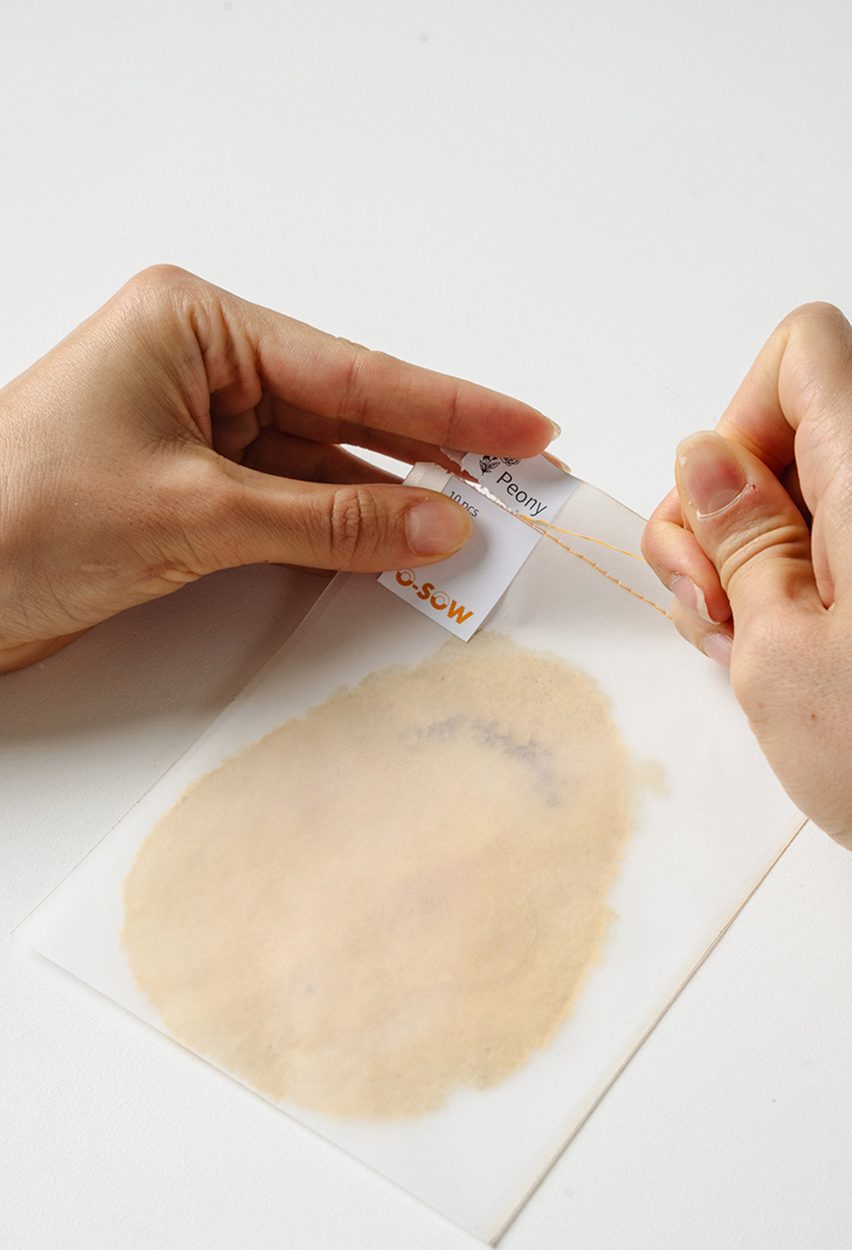
Other sustainable product design stories recently published on Dezeen include a rewilding trainer which enables the dispersion of plant seeds by Central Saint Martins graduate Kiki Grammatopoulos and a biodegradable juice bottle made from a potato starch-based material.
Photography is by Amit Martin Mansharof and Nadav Goren.

